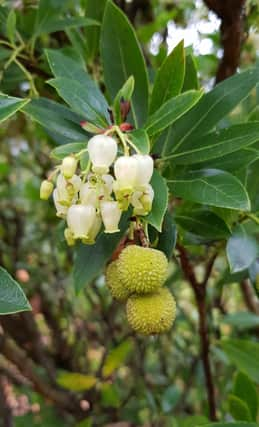GARDENING: Adding a bit of colour during winter months


We see so many attractive gardens, containers, window box and hanging basket displays throughout summer, and they are always accompanied by smiles on residents' faces and of those who pass by. But as autumn deepens too many gardeners clear away the summer debris, store their tools and retire indoors until spring.
Why not consider changing the habits of a lifetime? It need not cost the earth. Put something colourful in that bare patch of soil or in the container that stands empty at the door. This is nature's planting time so there are plenty of options at your local plant centre.
Advertisement
Hide AdAdvertisement
Hide AdPolyanthus, primroses, pansies, violas, are ideal for instant colour now and the promise of a crescendo in spring. If you`re wavering over the cost of a pack plants, consider the nature of its contents. Polyanthus and primroses lend themselves readily to dividing into sections year on year, representing a host of identical young plants over time, and violas self-seed as if they were going out of fashion! I`m continually rounding them up into groups for a floral
Performance. A single, well-chosen perennial tree or shrub for the garden or container, can transform the chi. Perhaps the attractive bark as in a white birch tree Betula jacquemonti? Or perhaps the red or pale green stems of dogwoods (Cornus `Sibirica` & C. `Flaviramea`). We have great pleasure from a diversity of slow growing conifers, some planted in containers near the house, others in the borders. Gold and silver variegated shrubs come to the fore on dank, dreary days. And if foliage for a vase decoration is requested by the lady of the
house, we can accommodate that too. Consider planting any of the following shrubs Elaeagnus `Maculata,` Euonymus `Emerald n` Gold` or `Emerald Gaiety,` Lonicera `Baggeson`s Gold,`
Pittosporum `Garnetii,` Viburnum tinus `Variegata,` Arbutus unedo (strawberry tree).
Advertisement
Hide AdAdvertisement
Hide AdThe biggest thrill in our out-of-season garden comes when we detect fragrance in the air and follow it to the source, which just happens to be a delicate-looking flower. That it can survive and emit fragrance in such dire conditions is inspirational to say the least. Mahonia `Charity` with its long, golden racemes of bloom, the pink flower clusters of Viburnum `Dawn` and tiny white inflorescences of Sarcococca humilis are typical examples of this.
Monitoring the gradual development of plants can be fascinating.
Perhaps something as simple as an indoor potted specimen such as the amaryllis lily (hippeastrum), bought in a box complete with pot and compost, and grown on the windowsill. Another option is dwarf bulbs planted in a container that stands just outside the kitchen window.
Try planting wallflowers that tantalisingly offer a preview of treats to come as they respond to the occasional warm winter day with a burst of early colour. They`re classed as biennials because their cultivation straddles two calendar years. The young plants bought now are from seed sown back in May/June and are destined to bloom next spring. Because they`re easily raised
Advertisement
Hide AdAdvertisement
Hide Adand the seed is so inexpensive, parks departments and many gardeners discard them after flowering, but not this fellow.
I grow three old favourites, `Cloth of Gold,` `Fire King` and `Persian Carpet.` In all three cases a packet of 400 to 500 seeds costs less than £2.00 and they`re easily started in drills outdoors in early summer. When their spring display is over the strongest are pruned to maintain a bushy shape and carefully transferred to a nursery bed until autumn. Softwood stem cuttings salvaged from the trim will root, while the parent plants develop new growth for their eventual replanting. It's not unusual to get a few years of service from these beauties. Similarly, a different group in a drystone wall, developed from seed mixed with mud that was thrown into the crevices, are trimmed with the hedge shears each year after flowering. Let plants brighten your days all year round!